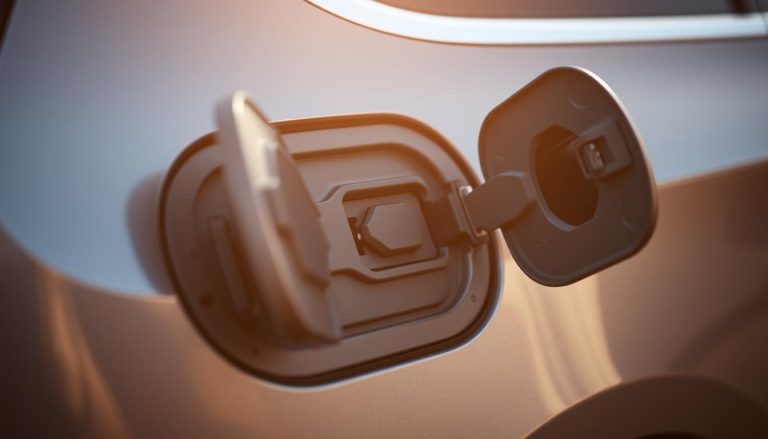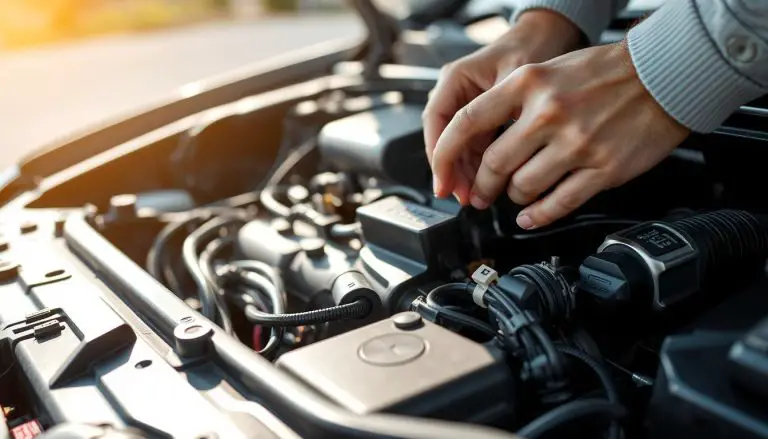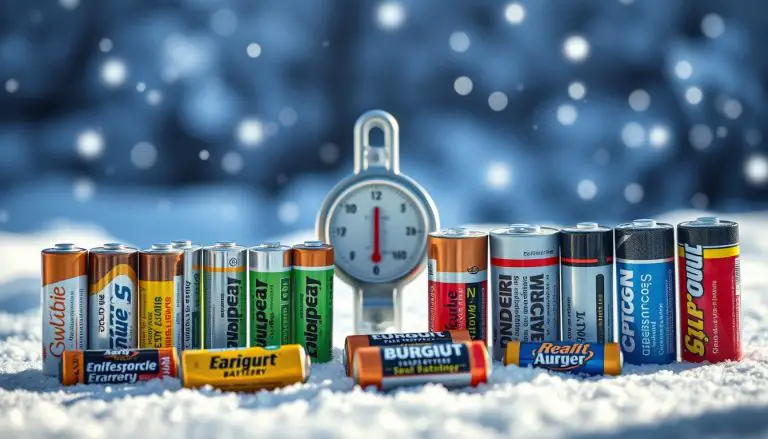Are you tired of dealing with gnat infestations in your vehicle? Those tiny flying insects can be a nuisance, and their presence can be a sign of a larger issue. Eliminating gnats is crucial not only for comfort but also for the health and cleanliness of your car’s interior.
Understanding the root cause of the problem is key to finding a solution. Gnats are attracted to moisture, making your car a potential breeding ground if there are damp surfaces or standing water. To get rid of gnats in your car, you need to address the underlying conditions that allow them to thrive.
Key Takeaways
- Identify and eliminate sources of moisture in your car.
- Use natural remedies to repel gnats.
- Regularly clean and vacuum your car’s interior.
- Check for and fix any water leaks.
- Use traps to capture and eliminate gnats.
Understanding Car Gnat Infestations
Understanding why gnats infest your car is crucial to eliminating them. Gnat infestations can be a persistent problem, often leaving vehicle owners puzzled about how to address the issue.
Why Gnats Are Attracted to Your Vehicle
Gnats are attracted to vehicles for several reasons, primarily due to the presence of moisture, warmth, and organic matter. Moisture accumulation inside a car can occur due to various factors, including leaks, high humidity, or wet items left inside. Gnats are also drawn to decaying organic matter, such as food spills or leftovers that haven’t been properly cleaned.
Furthermore, the warmth of a car’s interior, especially when parked in sunny areas, can attract gnats. They are also attracted to the carbon dioxide emitted by humans, making occupied vehicles more susceptible to infestation.
Common Types of Gnats Found in Cars
The most common types of gnats found in cars include Fungus Gnats, Drain Flies, and Fruit Flies. Fungus gnats thrive in moist environments, often near potted plants or where there is fungal growth. Drain flies are attracted to the organic matter that accumulates in drains, while fruit flies are drawn to fermenting or rotting fruit and vegetables left in the car.
Identifying the type of gnat infesting your vehicle is crucial for effective elimination. Each type requires a different approach to removal, making it essential to understand their characteristics and habitats.
Gnats in Car – How to Get Rid of Them in 9 Ways
Getting rid of gnats in your car requires a multi-faceted approach that includes cleaning, trapping, and repelling. To effectively eliminate these pests, it’s crucial to understand the various methods available and how to apply them.
1. Remove All Food and Organic Matter
One of the primary steps in getting rid of gnats is to remove any food or organic matter from your car. This includes trash, food wrappers, and any other edible items that might be attracting the gnats.
What to Look For and Remove
Inspect your car thoroughly for any signs of food or organic matter. Check under seats, in the glove compartment, and in any storage compartments. Remove any items you find and dispose of them properly.
2. Deep Clean Your Car Interior
A deep clean of your car’s interior is essential for removing gnat eggs and larvae. Use a vacuum cleaner with a hose attachment to reach into tight spaces.
Effective Cleaning Products and Techniques
Use a gentle cleaning product that won’t damage your car’s interior. Pay particular attention to areas around the seats and carpets where gnats are likely to be present.
3. Use Vinegar Traps
Vinegar traps are a simple and effective way to capture gnats. The acidity of the vinegar attracts the gnats, which then get trapped.
DIY Trap Instructions
To make a vinegar trap, fill a jar with apple cider vinegar and cover the top with plastic wrap. Poke some small holes in the plastic wrap to allow the gnats to enter.
4. Apply Essential Oils as Natural Repellents
Certain essential oils, such as peppermint and lemongrass, can repel gnats. Use a diffuser or apply the oils directly to surfaces.
Best Oils and Application Methods
Mix a few drops of essential oil with water and spray it around your car. You can also use a cotton ball to apply the oil to specific areas.
| Method | Effectiveness | Ease of Use |
|---|---|---|
| Remove Food and Organic Matter | High | Easy |
| Deep Clean Interior | High | Moderate |
| Vinegar Traps | Medium | Easy |
| Essential Oils | Medium | Easy |
5. Try Commercial Gnat Traps
Commercial gnat traps can be effective, especially when used in conjunction with other methods.
Top Products and Placement Tips
Look for traps that use a combination of attractants and killing agents. Place them in areas where gnats are most active.
6. Use Sticky Fly Paper
Sticky fly paper can capture gnats and other flying insects. Place the paper in areas where gnats are present.
Strategic Placement in Your Vehicle
Hang the sticky paper from the rearview mirror or place it on the dashboard. Replace it regularly to maintain effectiveness.
7. Apply Insect Growth Regulators
Insect growth regulators (IGRs) can prevent gnat larvae from developing into adults.
Safe Application in Vehicle Environments
Use IGRs specifically designed for indoor or vehicle use. Follow the product instructions carefully to ensure safe application.
8. Use Car-Safe Insecticide Sprays
Car-safe insecticide sprays can be used to kill gnats and other insects.
Product Recommendations and Safety Precautions
Choose products that are labeled as safe for use in vehicles. Always follow the product instructions and take necessary safety precautions.
9. Professional Pest Control Services
If the infestation is severe, consider hiring a professional pest control service.
When to Call the Experts
If you’ve tried multiple methods and still have a gnat problem, it’s time to call in the professionals. They can provide a thorough assessment and effective treatment.
Preventing Future Gnat Infestations
Maintaining a gnat-free car involves more than just eliminating the current infestation; it requires ongoing prevention strategies. To prevent gnats from taking over your vehicle, you need to focus on two key areas: regular cleaning and moisture control.
Establishing a Regular Cleaning Schedule
A regular cleaning schedule is crucial in preventing gnat infestations. This includes vacuuming the interior, especially areas around food and moisture, and wiping down surfaces with a mild detergent.
- Vacuum all carpets and upholstery thoroughly.
- Wipe down surfaces, including the dashboard and doors.
- Empty the trash regularly.
By maintaining a clean environment, you reduce the likelihood of gnats finding a conducive habitat in your car.
Effective Moisture Control in Your Vehicle
Moisture is a significant attractant for gnats. Controlling the humidity inside your car is vital.
| Moisture Control Methods | Description |
|---|---|
| Use a Dehumidifier | Reduce the moisture level inside your car, especially during humid weather. |
| Fix Leaks | Ensure there are no leaks in your car’s AC or other parts that could increase humidity. |
| Avoid Wet Items | Don’t leave wet items or clothes inside the car. |
By implementing these strategies, you can significantly reduce the risk of future gnat infestations in your car.
Special Considerations for Different Vehicle Types
The type of vehicle you own can significantly impact how you tackle a gnat infestation. Different vehicles present unique challenges, from design features to usage patterns, that can affect how gnats are attracted to and inhabit your vehicle.
Convertibles and Open-Air Vehicles
Convertibles and open-air vehicles are more susceptible to gnat infestations due to their open design. To combat this, owners can use additional mesh screens or netting when the vehicle is parked or in use to keep gnats out. Regularly cleaning the interior, especially after driving with the top down, is crucial.

RVs and Campers
RVs and campers often have more complex interiors, including storage areas and potentially damp environments, making them more prone to gnat infestations. Ensuring proper ventilation and regularly inspecting for moisture are key steps. Using gnat traps near food and waste areas can also be effective.
Work Vehicles and Trucks
Work vehicles and trucks can accumulate debris and organic matter, attracting gnats. Regularly cleaning out the cabin and storage areas, and using gnat repellents near work areas, can help mitigate infestations. For trucks with exposed cargo, covering goods can prevent gnats from being attracted to the vehicle.
By understanding the specific challenges of your vehicle type, you can implement more effective gnat control measures, ensuring a cleaner and more comfortable driving experience.
Conclusion
To effectively eliminate gnats from your vehicle, it’s essential to understand the steps outlined in the previous sections. A summary of gnat removal techniques includes removing all food and organic matter, deep cleaning your car interior, and using vinegar traps or essential oils as natural repellents.
By implementing these methods and maintaining a regular cleaning schedule, you can prevent future gnat infestations. Effective moisture control in your vehicle is also crucial in keeping gnats at bay.
For a gnat-free car, consider the final gnat control tips: regularly inspect your vehicle for signs of gnats, use car-safe insecticide sprays when necessary, and explore professional pest control services for severe infestations.
By following these guidelines, you can enjoy a gnat-free driving experience. Stay proactive, and you’ll be able to banish gnats from your car for good.
FAQ
What attracts gnats to my car?
Gnats are attracted to your car due to the presence of food, moisture, and organic matter. They can be drawn to spills, dirty interiors, and damp environments.
Are gnats in my car harmful?
While gnats are generally not harmful, they can be a nuisance and contaminate surfaces. Some gnats can also bite or trigger allergic reactions.
How do I get rid of gnats in my car?
To eliminate gnats, remove all food and organic matter, deep clean your car interior, use vinegar traps, apply essential oils, try commercial gnat traps, use sticky fly paper, apply insect growth regulators, or use car-safe insecticide sprays.
Can I use insecticide sprays in my car?
Yes, but make sure to use car-safe insecticide sprays and follow the manufacturer’s instructions. Always take necessary safety precautions to avoid exposure.
How can I prevent future gnat infestations in my car?
Establish a regular cleaning schedule, control moisture in your vehicle, and avoid leaving food or organic matter inside your car to prevent future gnat infestations.
Are there any special considerations for different vehicle types?
Yes, different vehicle types, such as convertibles, RVs, and work trucks, may require tailored approaches to dealing with gnat infestations. Consider the unique challenges of your vehicle type when addressing gnat problems.
Can I use essential oils to repel gnats?
Yes, certain essential oils, such as peppermint, lemongrass, and citronella, can be used as natural repellents to deter gnats. Always dilute the oils according to the manufacturer’s instructions and test a small area first.
How often should I clean my car to prevent gnat infestations?
Regular cleaning is crucial to preventing gnat infestations. Clean your car interior at least once a week, paying attention to areas where food and moisture accumulate.


